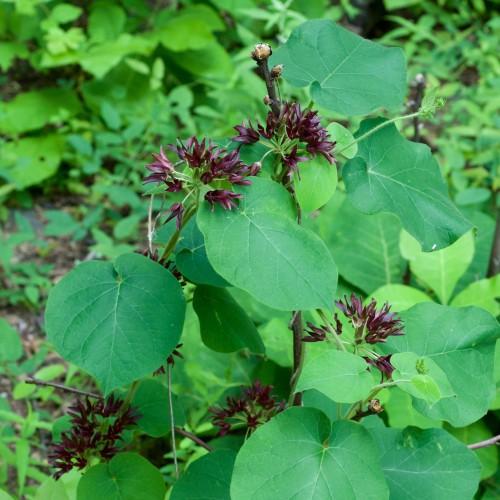
climbing milkweed
Matelea decipiens
Cycle:
Perennial
Watering:
Average
Hardiness Zone:
6 - 8
Flowers:
Flowers
Sun:
Full sun,part shade
Fruits:
Fruits Ready In Fall
Leaf:
Yes
Growth Rate:
Low
Maintenance:
Moderate
Drought Tolerant:
Yes
Invasive:
Yes
watering
Matelea decipiens, commonly known as Climbing Milkweed, is a versatile tender perennial suitable for landscapes, containers, or hanging baskets. This easy-to-grow native loves plenty of sun, so select a bright location with 8 or more hours of direct sunlight a day. It will tolerate some shade if well-drained. In terms of water, Climbing Milkweed needs plenty of it. The soil should consistently remain moist, but not soggy, which is ideal for use of a soaker hose as a watering solution. During periods of extreme heat or drought, water more regularly in the morning. For a deep root watering following the instructions on your irrigation system, do this 1 to 2 times in a week. Check the soil before watering. If the soil is still dry 1 inch below the surface, then its time to water. Always water at the base of the plant to avoid wetting the foliage. Providing plenty of water will ensure flowering and create the best environment for beneficial pollinators.
sunlight
Climbing milkweed (Matelea decipiens) thrives in bright, sunny locations. It needs at least 4 to 6 hours of direct sunlight each day, preferably in the morning or late afternoon when the sun is less intense. When growing in full sun, the plant will produce more flowers and be less susceptible to disease. Avoid planting this species in any part of the garden where shade is present for more than a brief time in the morning or late afternoon.
pruning
For the best possible results, climbing milkweed (Matelea decipiens) should be pruned in late winter or early spring. When pruning milkweed, it should only be pruned back by about a quarter of its height. Too much pruning can cause it to look unattractive, and too little pruning will not allow for proper removal of dead or damaged leaves, stems, or branches. Also, the pruning should be done in a way that produces an overall balanced look. Care should be taken to only prune at specific points in the plant’s growth cycle, as it will help keep the plant healthy and will also provide the best possible bloom. Pruning climbing milkweed will help promote fuller, healthier plants and should help produce more blooms.
